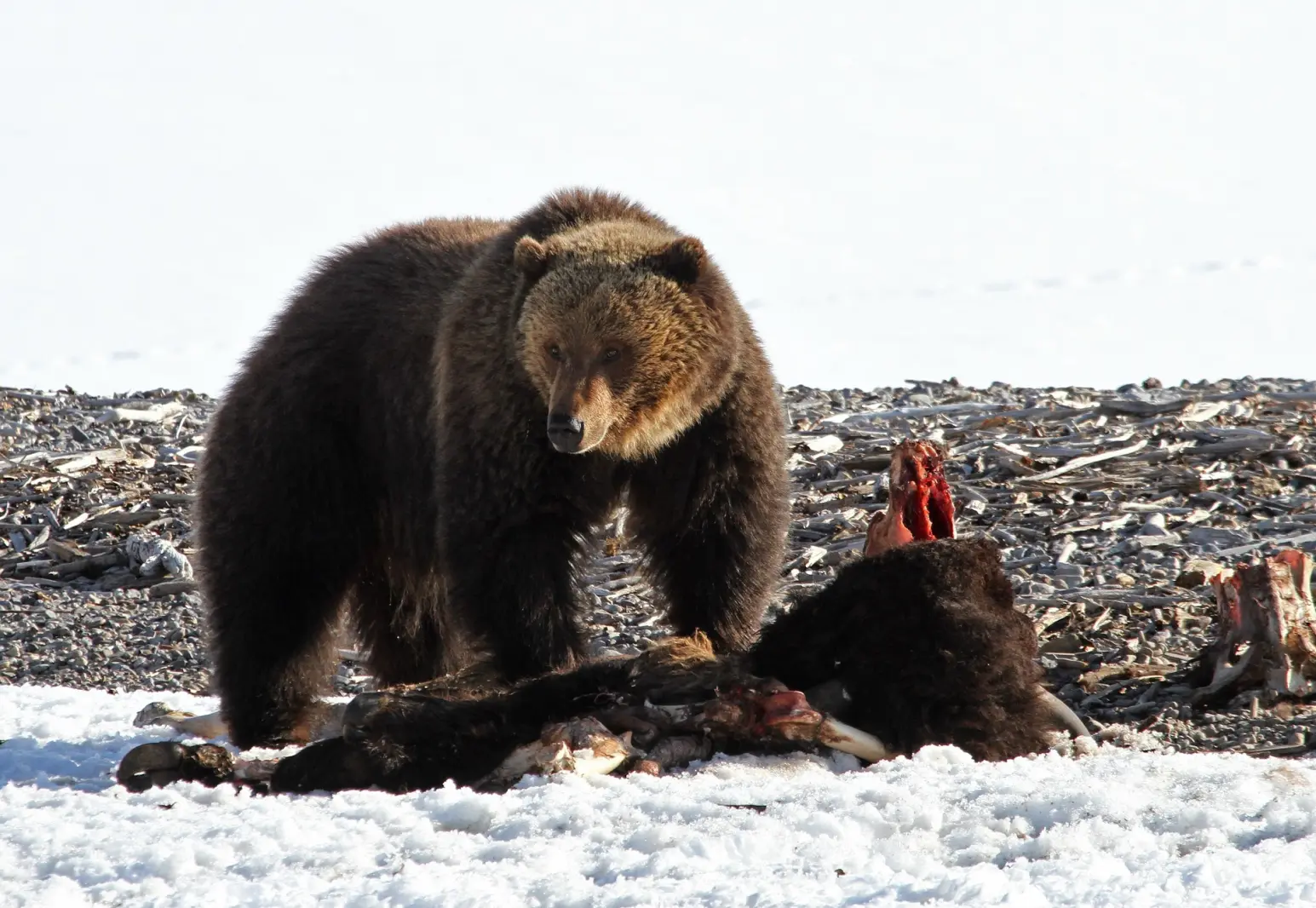Introduction
In a dramatic turn of events on a serene hiking trail, a 4-foot predator was killed by a hiker in an encounter that has captured the public’s attention. This incident, occurring in a remote area, highlights the unpredictable nature of wildlife interactions and the critical importance of preparedness while hiking. In this comprehensive blog, we will explore the details of this incident, the implications for wildlife and human safety, and the broader context of human-wildlife encounters. Using the keyword “4 Foot Predator Killed by Hiker” throughout, this article aims to provide a detailed and engaging analysis.
Key Takeaways:
- Preparedness is Key:
The incident of the 4-foot predator killed by a hiker highlights the importance of being well-prepared for wildlife encounters during outdoor activities.
- Understanding Wildlife Behavior:
Knowing the behaviors and potential threats posed by local wildlife can significantly reduce risks and improve safety during hikes.
- Human-Wildlife Encounters on the Rise:
Factors like habitat encroachment and climate change are leading to more frequent and sometimes dangerous encounters between humans and wildlife.
- Community Awareness:
Raising awareness in communities about wildlife activity and promoting safe practices can help reduce conflicts and enhance coexistence.
- Critical Decision-Making in Emergencies:
The hiker’s quick thinking and defensive actions during the encounter underscore the importance of training and knowledge in responding to dangerous situations in the wild.
The Incident: What Happened?
On a calm morning, a hiker embarking on a routine trek came face-to-face with a 4-foot predator. The predator, identified as a potentially dangerous species known for its agility and predatory instincts, posed a significant threat to the hiker. The details of the encounter are both gripping and sobering.
The hiker, whose identity remains confidential, was trekking through an area known for occasional wildlife sightings. The predator, described as being about 4 feet in length, emerged suddenly, leading to a confrontation that ended with the hiker killing the animal in self-defense. The immediate reactions and decisions made by the hiker were crucial in this high-stress situation.
Understanding the Predator
To fully appreciate the gravity of the situation, it’s important to understand the characteristics and behaviors of the 4-foot predator involved. Predators of this size are often apex hunters in their environments, exhibiting behaviors that make them formidable and sometimes dangerous to humans. Common species that fit this description include large reptiles, certain types of wildcats, and robust carnivorous mammals.
In the case of the 4-foot predator killed by the hiker, detailed analysis of its species and typical behavior provides insight into why such encounters can be so perilous. Understanding these characteristics helps in appreciating the risk involved and the critical nature of the hiker’s response.
The Hiker’s Response: A Detailed Account
The hiker’s response to the threat posed by the 4-foot predator is a central aspect of this story. The actions taken in moments of intense fear and danger are often crucial in determining the outcome of such encounters.
Immediate Reaction:
The hiker’s first reaction was to assess the situation quickly. This involved recognizing the threat level and making rapid decisions under duress. The hiker’s experience and preparedness likely played a significant role in how they handled the encounter.
Defense Mechanisms:
In self-defense, the hiker utilized available tools and methods to protect themselves. Whether through physical means or by using hiking equipment as a barrier, the response was a matter of survival.
Aftermath and Safety Measures:
Following the incident, the hiker took steps to ensure their safety and report the encounter to local authorities. This response underscores the importance of following proper protocols after a wildlife encounter to ensure both personal safety and the safety of others in the area.
Read More Article : The Ultimate Guide to Cab646onc: Benefits, Uses, and Why You Need It See More
Implications for Wildlife and Human Safety
The incident involving the 4-foot predator killed by a hiker has significant implications for both wildlife management and hiker safety.
Wildlife Management:
Understanding how such encounters occur and the factors that lead to them can help in developing strategies to manage wildlife populations and minimize conflicts. This includes creating awareness programs and implementing safety guidelines for areas with high wildlife activity.
Hiker Preparedness:
For hikers, this incident highlights the need for proper preparation and awareness. Carrying bear spray, having knowledge of local wildlife, and understanding how to respond to a predator encounter are all essential aspects of hiking safety.
Community Impact:
Such incidents also impact local communities and can lead to increased caution among residents and visitors. It’s important for communities to stay informed about wildlife activity and to follow guidelines that promote safe coexistence with wildlife.
Broader Context: Human-Wildlife Encounters
The encounter between the hiker and the 4-foot predator is part of a broader pattern of human-wildlife interactions that are becoming increasingly common. Factors such as habitat encroachment, climate change, and changes in wildlife behavior contribute to these encounters.
Habitat Encroachment:
As human activities expand into previously wild areas, the likelihood of encounters between humans and wildlife increases. Understanding and managing these encroachments are key to reducing conflicts.
Climate Change:
Climate change affects wildlife behavior and migration patterns, leading to more frequent and sometimes unpredictable encounters with humans.
Education and Awareness:
Educating both hikers and the general public about wildlife safety and behavior is crucial in mitigating the risks associated with human-wildlife encounters.
Conclusion
The incident of the 4-foot predator killed by a hiker serves as a stark reminder of the unpredictable nature of wildlife interactions and the importance of preparedness. By understanding the dynamics of such encounters and implementing appropriate safety measures, both wildlife and humans can coexist more harmoniously.
In summary, while the encounter was dramatic and unsettling, it provides valuable lessons on how to handle potential dangers in the wild. For hikers, being informed, prepared, and cautious can make all the difference in ensuring safety during outdoor adventures. The story of the 4-foot predator killed by a hiker emphasizes the need for respect towards wildlife and the importance of being well-prepared for any situation that may arise in the wilderness.
FAQs
1. What kind of predator was involved in the incident?
The 4-foot predator involved in the incident could be a large reptile, wildcat, or robust carnivorous mammal. Understanding its specific species provides insight into its behavior and the risks involved.
2. How should hikers prepare for potential wildlife encounters?
Hikers should carry bear spray, be knowledgeable about local wildlife, and know how to respond to different types of predators. Preparation and awareness are key to handling encounters safely.
3. What steps should be taken after a wildlife encounter?
After a wildlife encounter, hikers should ensure their safety, report the incident to local authorities, and follow any recommended guidelines or protocols to prevent further issues.
4. How can communities manage wildlife encounters?
Communities can manage wildlife encounters through awareness programs, safety guidelines, and habitat management strategies to reduce the risk of conflicts between humans and wildlife.
5. What impact does climate change have on wildlife encounters?
Climate change affects wildlife behavior and migration patterns, potentially leading to increased encounters between humans and animals. Understanding these changes is important for managing and mitigating risks.





